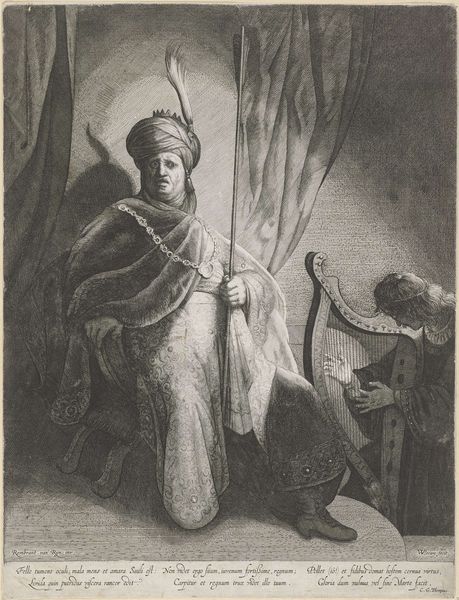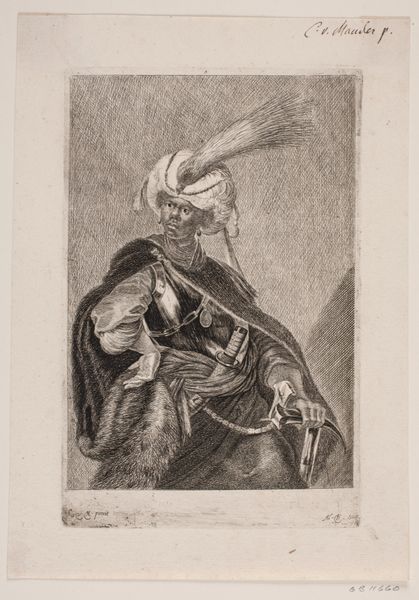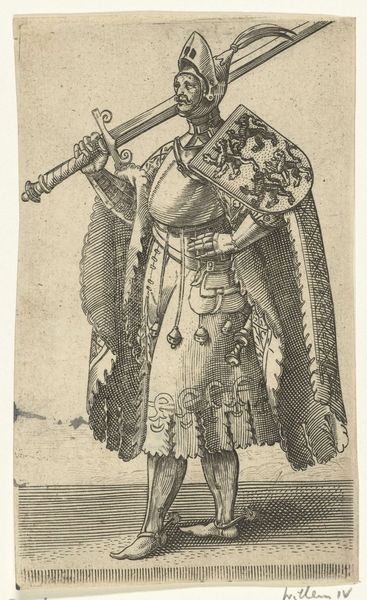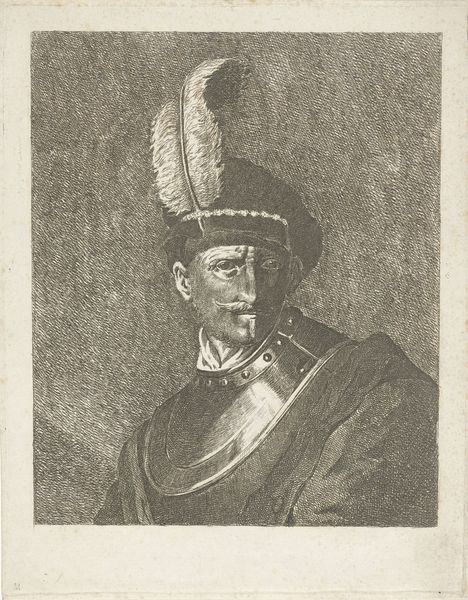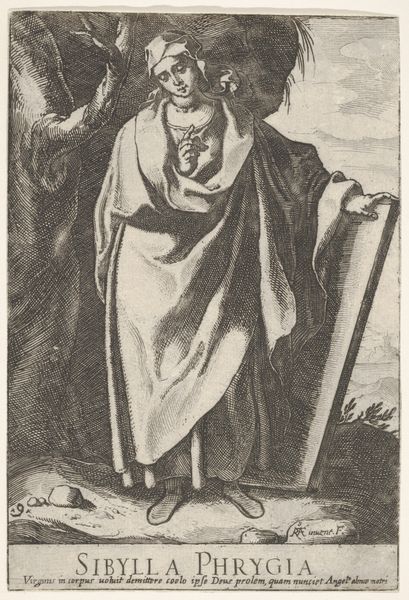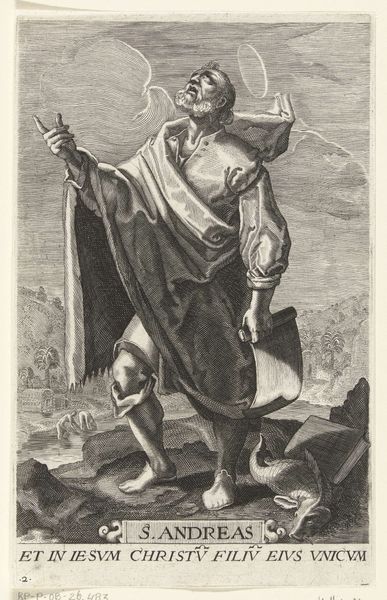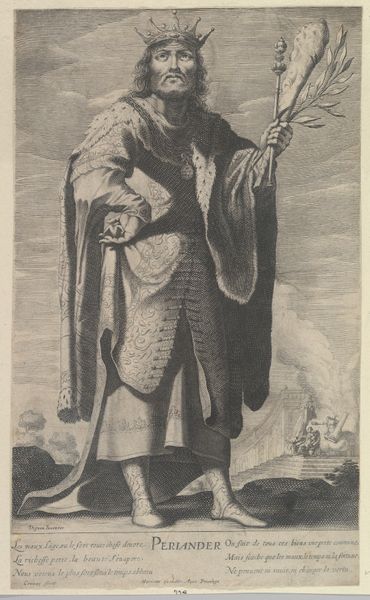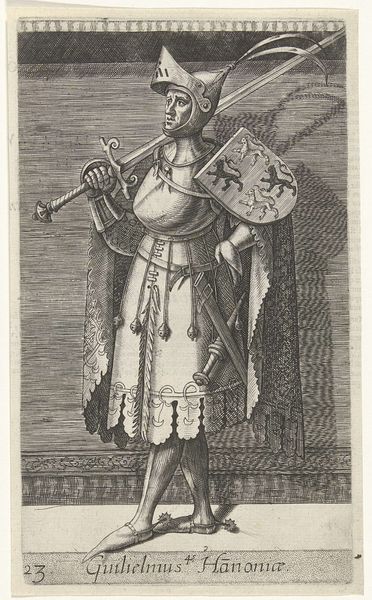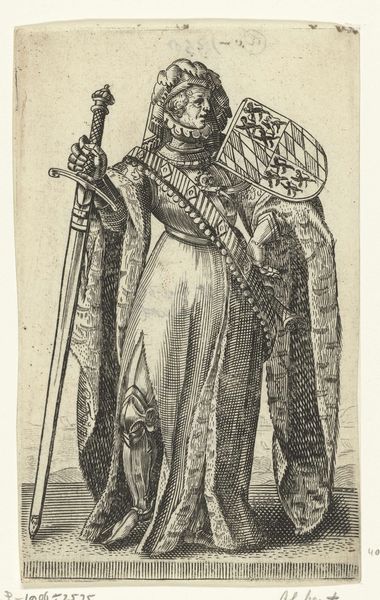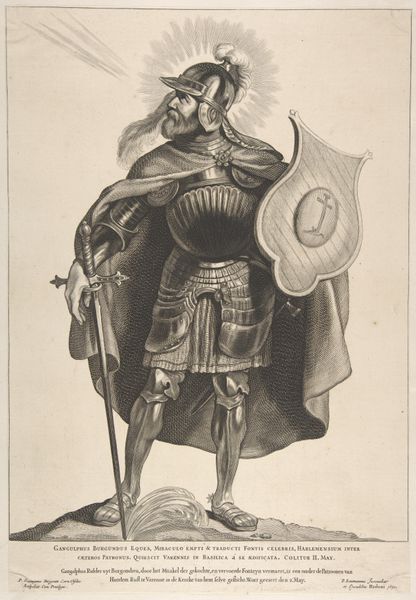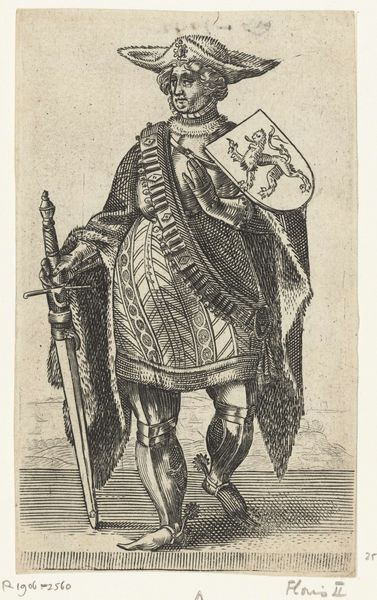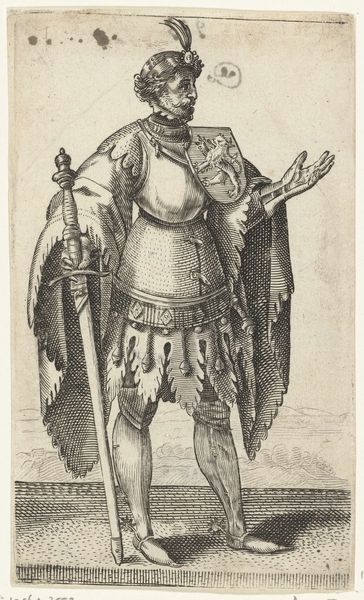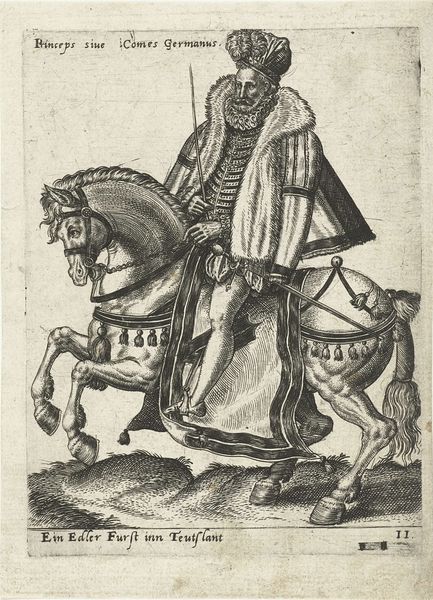
Dimensions: 167 mm (height) x 117 mm (width) (bladmaal)
Curator: Looking at this print, I feel a certain gravity, almost a somber regality. What strikes you first? Editor: Well, immediately, the title clashes with the image; it’s titled “A Kind of African in Armour,” made by Albert Haelwegh between 1643 and 1647, it already places the man in a racial "kind", and while technically a print, its power extends beyond the typical Baroque portraiture. Curator: Precisely, “a kind of” already boxes him in; I note the turban, the armour... Haelwegh captures the symbols of power from different cultural contexts and blends them onto this figure. Do you feel it diminishes his individual identity? Editor: Absolutely, that ambiguous "kind of" becomes a way to exotify and define this man in relation to European concepts, which tells us about power structures during the slave trade. Curator: Indeed. Observe how Haelwegh uses line and shadow, even in this print, to imbue him with dignity, with an undeniably heroic posture. It makes me wonder about the intended message. Editor: That's it, right there! Even through the layers of European interpretation, that intent comes through, although complicated by its context. The artist’s perspective seems at odds with the broader attitudes of his time. It is like the image itself is negotiating conflicting representations. Curator: The weight of history, you might say. The man becomes a vessel for understanding how Europeans visualized—and perhaps misunderstood—others. In those engraved lines lies a conversation about intercultural exchange, appropriation, and the burdens of representation. Editor: Yes! It is a painful paradox – a beautiful piece perpetuating potentially problematic, reductive imagery. The turban isn’t just ornamentation; it’s a signifier that connects to broader historical and perhaps political struggles. Curator: It compels us to acknowledge that portraits, regardless of skill, always embody subjectivity and its related biases. Ultimately, that is why these enduring objects remain potent sites of memory, contestation, and continuous negotiation with what they appear to represent. Editor: Absolutely, a great piece, loaded with historical information. It shows us not just what once was, but how those perspectives shaped power dynamics. Food for thought.
Comments
No comments
Be the first to comment and join the conversation on the ultimate creative platform.
